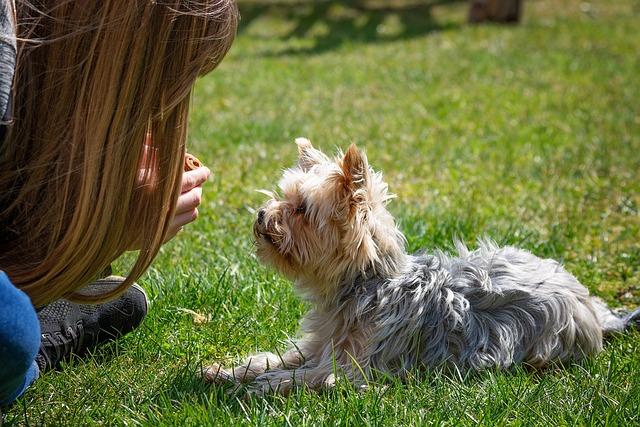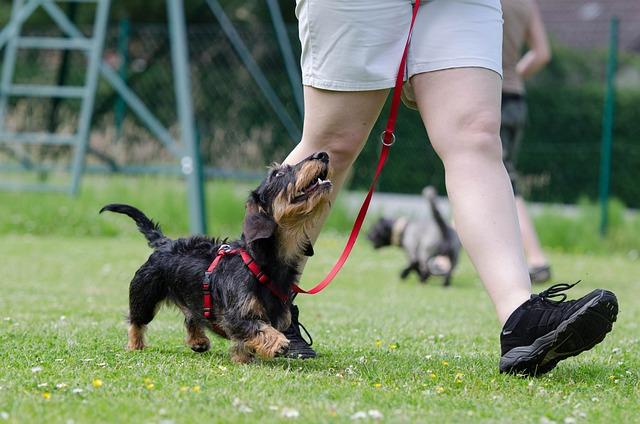When welcoming a furry friend into your home, it’s natural to hope for a harmonious relationship filled with joy and companionship. However, sometimes our beloved canines exhibit aggressive behaviors that can challenge even the most patient pet owners. Understanding that aggression in dogs is not uncommon and can often be addressed with the right guidance is the first step towards nurturing a peaceful coexistence. In this article, we will explore the best dog training classes specifically designed to address aggressive behavior. With a warm heart and open mind, you will discover tailored approaches that not only aim to curb aggression but also foster trust, communication, and a deeper bond between you and your four-legged companion. Let’s embark on this journey together to transform challenges into opportunities for growth and understanding.
Understanding Aggression in Dogs: Identifying the Root Causes
Recognizing the underlying causes of aggression in dogs is crucial for effective training and fostering a harmonious relationship with your furry friend. Often, aggression can stem from a variety of factors, including:
- Fear and Anxiety: Dogs may exhibit aggressive behaviors when they feel threatened or anxious. Identifying the triggers for these emotions is the first step in addressing the root cause.
- Territorial Instincts: Some dogs may become aggressive to protect their territory or possessions. Understanding this instinct can help in managing and redirecting their behavior.
- Lack of Socialization: Insufficient exposure to different environments, people, and other animals during their formative months can lead to fear-based aggression.
- Pain or Medical Issues: Sometimes, aggression is a result of pain or discomfort due to underlying medical conditions. A thorough veterinary examination can help rule out these causes.
By pinpointing these causes, you can tailor training approaches to address specific issues, making the learning process more effective and compassionate. Engaging in training classes that focus on these aspects not only helps in curbing aggressive behaviors but also strengthens the bond between you and your dog.

Choosing the Right Training Method: Positive Reinforcement vs. Traditional Techniques
When addressing aggressive behavior in dogs, choosing the appropriate training method can significantly influence the outcome. Positive reinforcement focuses on rewarding desirable behavior, making it an effective approach for modifying aggression. This method fosters a nurturing environment where dogs are encouraged to repeat good behavior in anticipation of rewards like treats, praise, or playtime. The key advantages include:
- Builds Trust: Establishes a strong bond between the dog and trainer, essential for overcoming aggressive tendencies.
- Encourages Engagement: Dogs are more likely to engage and participate actively when they anticipate positive outcomes.
- Reduces Stress: A positive approach reduces anxiety and stress, which can exacerbate aggressive behaviors.
On the other hand, traditional techniques often rely on correction or punishment, which might suppress unwanted behavior temporarily but can also lead to increased anxiety and fear. While some might see immediate results, the long-term implications can be detrimental to the dog’s emotional well-being. Consider these potential drawbacks:
- Fear-Based Responses: Dogs may develop fear-based responses, leading to further behavioral issues.
- Erosion of Trust: Can damage the relationship between the dog and owner, making future training more challenging.
- Inconsistent Results: Traditional methods may yield inconsistent results, as they don’t address the root cause of aggression.
Ultimately, a compassionate, positive reinforcement approach is recommended for its holistic benefits, fostering a safe and trusting environment for your furry friend to thrive.

Top Training Classes for Aggressive Dogs: Expert Recommendations
When it comes to addressing aggressive behavior in dogs, selecting the right training class is crucial. These classes are designed to create a safe and structured environment where your dog can learn to manage its aggression and build positive behaviors. Here are some expert-recommended classes that stand out for their effectiveness and compassionate approach:
- Behavior Adjustment Training (BAT): This method focuses on helping dogs make better choices through positive reinforcement, allowing them to gain confidence and reduce aggressive tendencies.
- Counter Conditioning and Desensitization: By gradually exposing dogs to their triggers in a controlled manner, this technique helps in reducing anxiety and aggression, fostering a calmer demeanor.
- Positive Reinforcement Training: Reward-based training encourages dogs to replace aggressive behavior with desirable actions, promoting a harmonious relationship between the dog and owner.
- Clicker Training: Utilizing a clicker as a marker for good behavior, this method helps in precise communication with your dog, which can be especially effective for addressing aggression.
These classes not only aim to modify aggressive behavior but also emphasize building trust and a deeper bond with your furry friend. By engaging in these expertly crafted training programs, you can pave the way for a more peaceful and rewarding relationship with your dog.

Creating a Safe Environment: Tips for a Successful Training Experience
To foster a positive learning environment for your furry friend, it’s crucial to ensure that both you and your dog feel secure and supported throughout the training process. Here are some tips to consider:
- Choose the Right Space: Select a training area that’s free from distractions and potential triggers. This helps in maintaining focus and encourages a calm atmosphere.
- Professional Guidance: Opt for trainers who specialize in handling aggressive behavior. Their expertise can provide tailored strategies that address specific challenges.
- Safety First: Use equipment such as muzzles or leashes when necessary to ensure safety for all participants without making your dog feel restricted.
- Gradual Exposure: Introduce your dog to new experiences and stimuli at a controlled pace, allowing them to build confidence without feeling overwhelmed.
By implementing these strategies, you create a nurturing environment that not only facilitates learning but also strengthens the bond between you and your dog. This approach promotes a harmonious and effective training journey.

